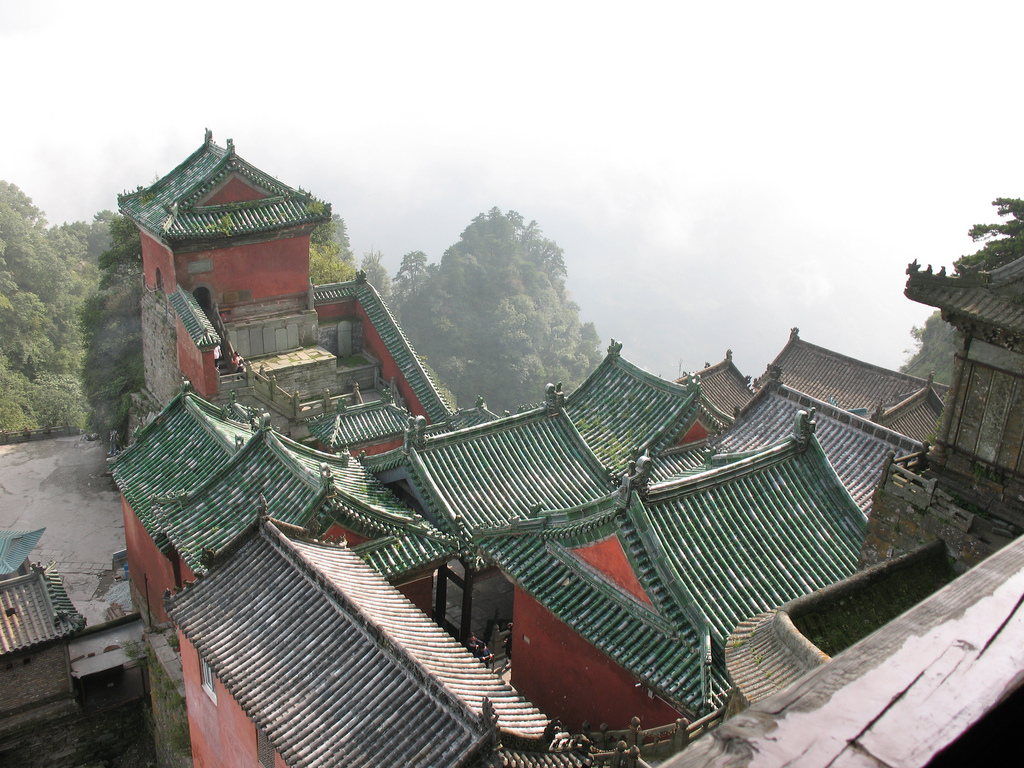The Sacred Mountains of China in Astrology. Astrology and Sacred Sites: the astrogeographical positions and energetical topics of the Sacred Mountains of China
Related articles: Astrogeographical position of Beijing, The Forbidden City of Beijing in Astrology, White Horse Temple – the first Buddhist Temple in China, Astrology and Sacred Sites: The Longmen Grottoes at Luoyang, The Legendary Shaolin Monastery, The Lucky Coin Structure in Sagittarius, The Tian Tan Temple of Heaven in astrogeography, Libra as the sign of symmetry, “Tower of Ring” and the punctuation of the landscape with a ringtower in Tianjin,
The Sacred Mountains of China in Astrology
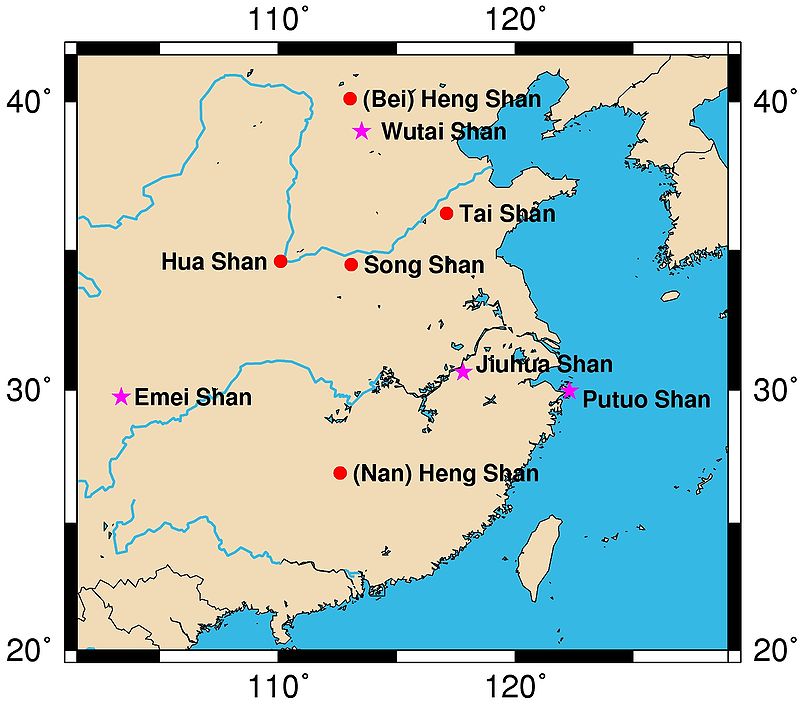
Astrology and Sacred Sites: The Sacred Mountains of China have played an important role as sites for prayer, meditation, religious exercise, initiation and pilgrimage for several thousand years. There are several versions of lists of the holiest mountains of which the classical Five Great Mountains of China represents the most important one.
Read: Sacred Mountains of China
Video: The Sacred Mountains of China
The Five Great Mountains of China and their Resonance with spiritual water sign Pisces
The five great mountains are also referred to as the sacred mountains of Taoism. In Chinese mythology the 5 Great Mountains represented the parts of the body of the first living being or creator deity Pangu. This legend suggests the idea of a systemical interrelation of the Five Great Mountains as essential parts of the “body” of the landscape. In systemical astrogeography the position of these poles, chakras or energetic centers can be measured and defined systematically. Astrogeography can be used here as a method to get to a deeper understanding of the definition of energies and qualities associated to each mountain in relation to its position in the morphogenetic field.
In chinese tradition the qualities assigned to each one of the 5 Great Mountains are defined by the five directions which in philosophy, geomancy (feng-shui), astrology and medicine are embedded in a wholistic system of categories called Wu Xing:

A systemical understanding of the system of directions and correspondences treated here should of course be aware that the 5 directions as used here are combining several different dimensions of reference. This means that the correspondences can not be directly transferred into a single-dimensional scheme of correspondences – as is a zodiac. For example the central position of Mount Song does not refer to a direction but to another dimension of descriptions of locations then the four earthly directions (E,W,N,S). And the same accounts for the correspondence of the earth element with the 3rd month of a season: neither is it a logically straight part of the yearly seasons as the other 4 seasons. Nor is the last month of all the seasons a straight correspondence to the center of the four directions (as would be the central month of a season). This means that the analogies as used above are not in exact direct resonance but arranged for practical use, which is good but should not be confused with exact analogies which can be validated through congruence.
Song Shan and the interpretation of Leo with Gemini for the role of an energetical center
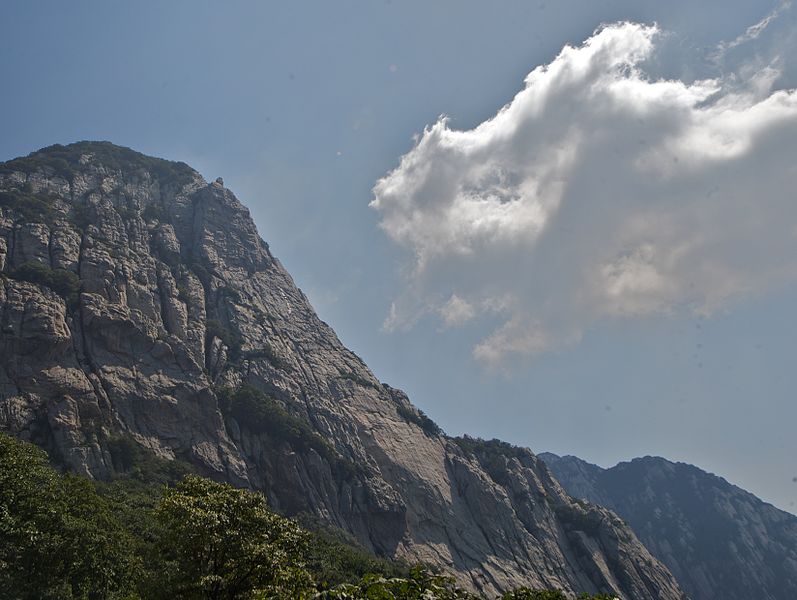
As can be seen on the map above Mount Song is in the central position among the nine holiest mountains. But let`s examine in how far the astrogeographical position could testify and explain the Mount Song as the energetical mountain center of the land.
In the list below it can be seen that Mount Song which is related to the center of the energetical system of the five mountains in fact has one coordinate in Taurus the sign of the earth (field level 3), grounding and centering at earthly places. Taurus is an astrogeographic indicator that could to some extent verify the role of Song Shan as the central mountain. But then the same is the case for Mount Tai and Mount Shan in Shanxi.
More important for the supra-regional importance could be the position of the mountain range of Song Shan in highly centralist, magnetic royal fire sign Leo for field level 2. Anyway Leo the sign of the Sun as the center of our solar system is the strongest indicator for energetic centers in the landscape.
The combination of centralist Leo with mutable Gemini the sign of road crossings and connections does not emphasize Mount Song`s role as an energetical center of the land. Gemini rather points at a center of the infrastructure or traffic junction or in terms of the flow of electromagnetic energies along the surface fields at an interface and link for the flow and exchange of energies in the morphogenetic fields.
The Traditional list of the Five Great Mountains

Field level 2 describes the position of the full mountain in the morphogenetic field of the province where the mountains lie whereas field level 3 defines the astrogeographical quality and atmosphere of the peak areas and their surroundings. I was really surprised and fascinated when I found out that all the 5 peak areas of the sacred mountains have at least one astrogeographical coordinate located in spiritual water sign Pisces the sign of meditation, mystification and temples. Pisces is the sign of the spiritual plane and by far the most important indicator for the function of temples to reconnect us with the spiritual origin of existence. This means that the central peak areas of these mountains in Pisces actually represent places that are highly supportive for spiritual experience, meditation and reconnection with god.
For comparison: this is not so in the case of the peak area of Mount Olympus. In the case of Mount Olympus the peak area (field level 3) lies in the constellation of a kitchen or dining room of the gods (Taurus with Cancer) but not in the signs of meditation. In the case of Mount Olympus the whole of the mountain range has both coordinates in the mystic, spiritual Pisces for field level 2 indicating a mystical mountain range (Pisces-Pisces) with the kitchen of the gods (Taurus-Cancer) at its peak area.
As Pisces is a double-sign there is also another aspect to be mentioned of Pisces here: the presence of an astrogeographical coordinate in Pisces at places is no guarantee that a temple is what it seems or pretends to be. Pisces usually paths the way for mystification and hidden manipulation at the same time as it leaves the doors of perception open to the invisible. Therefore the position of “Holy Places” in Pisces is as typical as it can be ambiguous. (Compare: Glastonbury Abbey)
Though we are dealing with a geomantical observation probably much older than the history of Buddhism in China the astrogeographic position of all five mountains in Pisces is actually congruent and in harmonious resonance with the astrogeographic coordinates of the place of the illumination of Gautama Buddha. The Mahabodhi Tree at Bodh Gaya has both coordinates in Pisces which gives us a clear hint at the Pisces` important role for deep meditation.
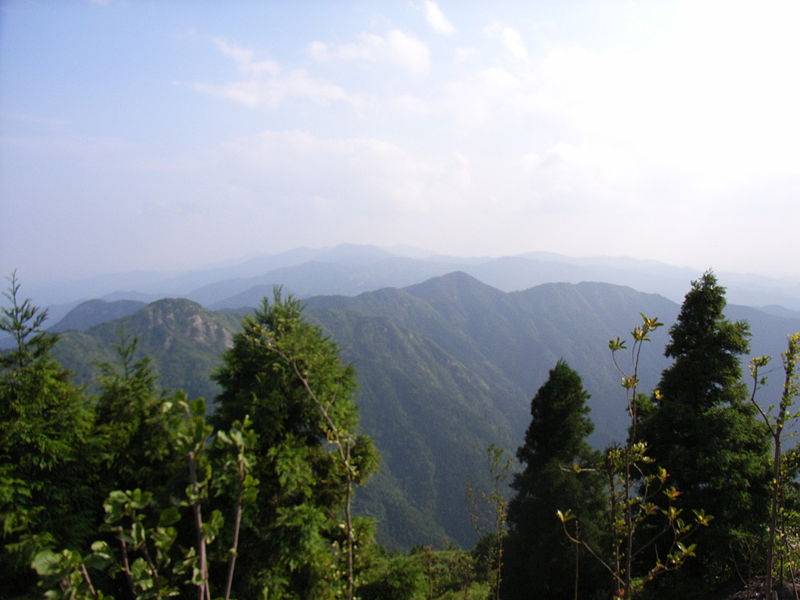
Among the five great mountains this accounts particularly for Mount Heng in Hunan, whose peak area (both coordinates in Pisces for field level 3) is a truly mystical place in the sense of a Piscean mountain. This should make it a potentially highly auspicious and stimulative place for meditation.
Mount Tai the most famous among the 5 Great Mountains
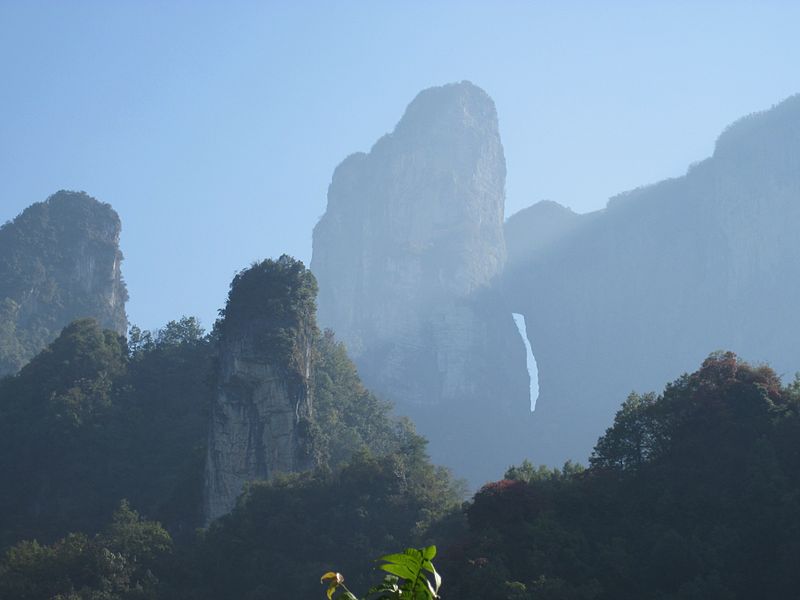
Mount Tai is the most famous of the 5 Great Mountains. According to the wiki article “It has been a place of worship for at least 3,000 years and served as one of the most important ceremonial centers of China during large portions of this period.” The place had the status of being the the major place for the imperial sacrificial rites heaven (on the summit) and earth (at the foot) in the so called Fengshan sacrifice. The supreme deity worshiped on Mount Tai is the “Emperor Lord of Mount Tai” which directly relates the mountain to the Chinese emperors.
It is really fascinating that “Japan, India, the Persian court in exile, Goguryeo, Baekje, Silla, the Turkic Khaganate, Khotan, the Khmer, and the Umayyad Caliphate all had representatives attending the Feng and Shan sacrifices held by Emperor Gaozong of Tang in 666 at Mount Tai” (wkipedia article quoting Skaff 2012, pp. 146-7.)
For the position of “Heaven`s Gate” on top of Mount Tai compare my blogtext Heaven`s Gate on the point of the winter solstice.
How to explain the importance of Mount Tai? For field level 2 which describes the position of the whole mountain range the peak of Mount Tai is located on the last degree of spiritual water sign Pisces and only about 500 m north of the cardinal divide between Pisces and Aries. This position makes it a part of the spiritual plane but brings it right next to the important initial degree of the zodiac at 0°Aries. Aries is a highly important aspect for ritual sacrifice and prayer for kings, rulers and generals as it relates to all aspects having to do with rulership through warfare (compare: Oracle of Delphi).

The highly important Dai Miao Temple place of the imperial sacrificial rites at the southern foot of Mount Tai is actually located in Aries. This explains how the peak area of Mount Tai remains removed from this practical things in the realms of spirituality, And this can be said even more so as the second coordinate of Mont Tai lies in spiritual air sign Aquarius the sign of the sky and of reconnection with the abstract itself.
The Four Sacred Mountains of Buddhsm in China and their resonance with Virgo
Here is a list of the 4 holy mountains of Buddhism in China for comparison with the other 2 major lists of sacred mountains in China. As can be seen for field level 3 which describes the peaks and their surrounding area the astrogeographical positions of two mountains are in Virgo the exact opposition sign of Pisces which is the dominant astrogeographical factor in the traditional Five Great Mountains list of China.

Virgo the sign of protected places, protection of nature, retreats, yoga and meditation culture and philosophy is also the most important astrological indicator for India the place of origin of Buddhism. The position of the peak areas of the Sacred Mountains of Buddhism in Virgo is a clear indicator for the resonance with Indian monk culture. Secondly earth sign Virgo as the sign of spiritual entities of plants and protection of nature relates the choice of these mountains to the focus on earthly aspects of spirituality.

The mountain range of Mount Emei is because of its intense resonance with the two emotional signs Leo and Cancer to be examined as a site of particularly intense magnetism and highly stimulating and supportive for fertility. This may not be as intense at the site of the so called “Golden Summit” which because of its position in the highly alert, defensive, fortress-like constellation of fire sign Aries with water sign Scorpio may not make it easy to feel the full potential of the site. For meditation purposes the softer less, steep parts on the western half of the mountain located in Pisces and Aquarius would be particularly recommended for those who are seeking more relaxed sites for meditation.
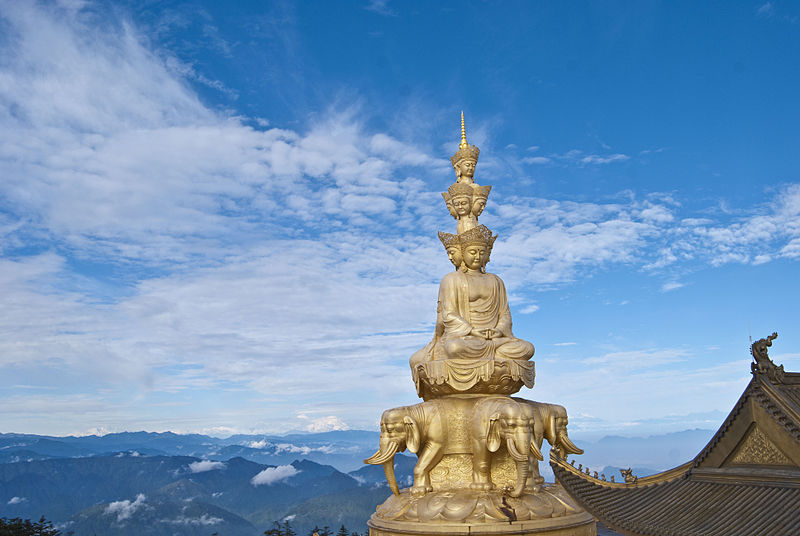
The golden Samantabhadra statue on top of the temple on the Golden Summit along with golden pagodas and other golden Buddha sculptures inside the temples of Mount Emei is an intense resonance with the astrogeographic position of Mount Emei for morphogenetic field level 2 where both coordinates lie in highly magnetic fire sign Leo the sign of the Sun, light and gold.
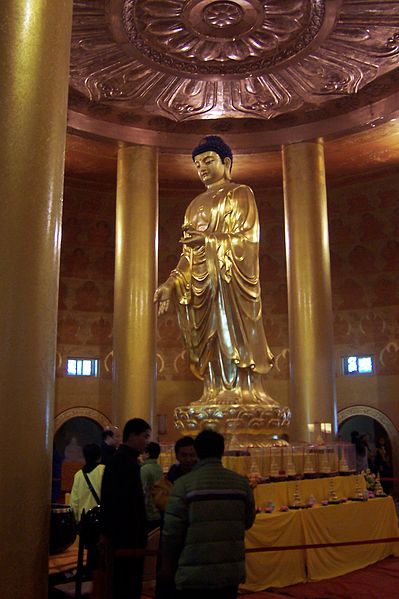
But the appearance of so much gold is not only due to the resonance of shiny Leo here which is valid for field level 2 and thus the whole mountain range but also to the correspondence of the site of the peak area with Scorpio for the next smaller level of morphogenetic fields (level 3). It can be seen even as due to a stress reaction in the inner process of the sign of Leo. This is as the typical reflex of Leo to deliver proof of his superiority (or majesty) is symptomatically aggravated through the eighth house in the inner evolution of the sign between 17°30 and 20° of the sign. Such reactions onto Leo`s strife for majesty occur in Scorpio because the extremely alert self-defense of the sign tends to interprete and experience this momentum of Leo as astress. How to outdo majesty then? The answer here is simply: with more costs, more gold, more shiny buddhas..
The List of Four Sacred Mountains of Taoism in China
Laozi who lived in the 4th century BC gave the name of Tao (the path) to Taoism. But many aspects of the cultural, inheritance of chinese religion, politics, philosophy, literature, art, medecine and chemistry incorporated in Taoism have existed as early as 1000 BC or even before.

The List of the 5 Classical Great Mountains of China is also referred to as a list of the sacred Taoist mountains of China. But apart from that there exists another list of four traditionally sacred mountain places of Taoism. Their choice is not based on considerations of their energetical importance in the first place but rather on their important role in Chinese history. The astrogeographical coordinates of their peak areas (field level 3) are not as homogeneous as in the case of the other 2 lists.
Records of the four sacred Mountains of Taoism partly goes back to the mythical periods or the great teachers of Taoism like Zhang Daoling who stayed at Qīngchéng Shān.
Zhang Daoling who lived around 34-156 BC was the founder of the highly influential Taoist sect of the “Celestial Masters” through which he attempted to gain political control over a theocratic state in what is now Sichuan.
Wudang Shan the place of the Dark Warrior and Origin of Chinese Martial Arts is located in Aries
Wudang Shan played an important role as the supposed origin of Tao Yoga or Tao Yin,T’ai Chi Ch’uan and Chinese Martial Arts. The north half of the mountain because located in dynamic male fire sign Aries the sign of warfare is to be seen as the main place of astrogeographical resonance for the topic of the martial arts here. The famous taoist temples and monasteries associated with the chinese god Xuan Wu are located in that area. Xuan Wu is also called the “Dark & Mysterious Warrior” and particularly revered in the practice of martial arts. The word “martial” derives from the name of Mars the roman god of warfare and as a planet the astrological ruler of fire sign Aries.
